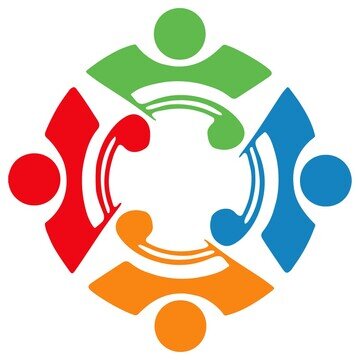57. Make connection your default ... it's the key to living longer and healthier!
Humans have been in search of the holy grail for eons, with tech millionaire Bryan Johnson putting the latest—most modern—spin on it. The idea of living longer and healthier is appealing! But what if the key to longevity isn’t mythical, and doesn’t require any bizarre science experiments? In fact, one of the biggest contributors to a long life is social connection.
Data point of the week
Have you heard of the “Blue Zones?” They’re geographical regions with a significantly higher than average life expectancy and a high concentration of centenarians (people living to 100 and beyond). Blue Zones have been studied extensively to identify the common denominators of what leads to a long life.
Research on the five identified Blue Zones uncovered nine common factors between the radically different cultures and regions. Three of the nine factors have to do with social connectedness.
One of the Blue Zones, Okinawa Japan, has a practice of assigning young children into groups of about five, called a “moai.” Members make a lifelong commitment to each other, to provide friendship, social support, and sometimes financial and practical support. Moai get together regularly to socialize. It’s a little like having a second family made up of your peers.
Note: Blue zone research has been called into question recently with the alternate explanation that the large number of centenarians in the blue zones are a result of bad record keeping (missing or inaccurate birth certificates) and pension fraud (family members not reporting deaths in order to keep collecting pensions). The blue zone research team refutes this claim, stating that the regions “have been fully validated by strict demographic criteria” and birth records carefully verified.
Reflection
Regardless of the controversy, there are hundreds of studies confirming that good relationships improve health and extend lifespan.
And, I LOVE the idea of Moai. Ever since I heard it, the idea has stuck with me. What would our lives be like if each of us belonged to a maoi?
It may seem unrealistic in our culture to assign children to a group of friends. And it may be harder to maintain close bonds since people re-locate more often. But what about a modified version?
What if children starting at a new school were assigned a group of peers to be friends, look out for one another, and include in social activities?
What if employees entering a new job were assigned to a team of co-workers with the purpose supporting each other’s personal and professional growth?
A ProjectConnect group could easily fill that role!
My youngest sister was part of a kind of accidental moai. Four families in our neighborhood all had babies around the same time … and by the time they were toddlers the parents were desperate for childcare. So, they formed a group, nicknamed it “girl club,” and each parent took turns taking care of all four girls one day per week, giving the other parents the day off. The girls in “girl club” were together 4-days a week for this shared day-care, and later went to school together. 40 years late, these are still my sister’s closest friends!
It's never too late to find/create your own moai. My book club of 6 women has evolved into a moai of sorts – and that started in my late 40s!
Connection Skill & Action Step: Make connection your default—build it in
One of the things that I love about the concept of moai is that connection is built it. It takes the effort out of connecting.
For most of us, our “default mode” is being alone, or with our partner/immediate family. Getting together with other people requires making a conscious effort … and it can feel like an emotional lift.
It’s helpful to take decision-making out of the equation and structure our physical environment and calendar to support our goals. Here are three ideas for turning connection into your default:
Build Automatic Recurring Connection into your schedule (social time that recurs on a regular basis). For example, join a weekly pickleball practice or monthly book club.
Invite people to join in activities you regularly do alone. For example, for a couple of years a group of my friends rotated cooking and hosting a meal every Sunday evening. About once a month I would cook and have people over, and on the other Sundays I enjoyed good food and company without having to lift a finger!
Consider connection when you make a major life decision or transition. If you’re taking a new job, or choosing a college, what’s the social culture like? Do they have anything in place to help people build relationships? If you’re re-locating or buying a home, how friendly is the neighborhood? How close will you be to friends and family? Are there community spaces nearby? These have far more impact on happiness than home size, or having a great kitchen.
Questions to reflect on or to spark conversation. Please share your responses in the comments—we love hearing from you!
What examples do you have of making connection the default, so that it’s part of your life without much conscious effort?


